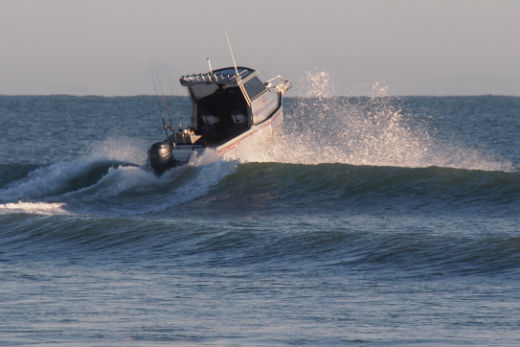Maritime New Zealand is about to increase the costs on a bureaucratic system already being described as a disaster by the people affected.
Maritime NZ is having a workshop in Tauranga on December 10, to explain to local charter operators, fishing charterers, dolphin spotters and the like; why they are going to have to pay even more money for a system they say doesn't work.
Photo: File.
'The surveying industry over the last seven months has completely collapsed under Maritime New Zealand's new regime,” says NZ Marine Transport Association executive officer Margaret Wind.
'We've gone from 71 surveyors to about 13. And there are hundreds of boats out there just not being surveyed, there's just not the people there.
'And that also goes to this MOSS system it's just extortion they are just auditing people to fund the numbers of people they employ to manage the new system. So it's just a disaster.”

Marine Transport Association executive Margaret Wind.
In order to legally operate, commercial boats require regular safety inspections called surveys, by qualified marine surveyors.
The maritime transport association represents the commercial operators, the fishing boat operators, the fishing charter boats, ferry services, dive trip operators, dolphin watchers who may eventually be forced the pass on MNZ's price rises to their customers.
The Maritime Operator Safety System requires maritime operators to develop and maintain their own safety system covering all vessels in their operation. By putting a bigger focus on safety for vessel owners and operators, MOSS will improve safety outcomes, says MNZ.
MOSS is intended to cover most commercial operations in New Zealand waters, including those using barges carrying passengers, fishing ships, rigid-hulled inflatable boats, large vessels, foreign charter fishing vessels and non-SOLAS foreign-flagged vessels.
'Maritime NZ must recover all the costs of this work from fees or the Maritime Levy but the money we currently receive is not meeting the costs of delivering MOSS and SeaCert, despite a strong focus on efficiencies,” says MNZ director Keith Manch.
Margaret Wind says the cost of MOSS for a single vessel operator with a 12-15m vessel, is between $3500 to $5000, in the first couple of years of entry to MOSS. This covers the application, survey and initial audit fees. On-going costs would be in the range of $1500 each year spread across the 10-year MTOC period.
In Professional Skipper Magazine in July/August 2014, Margaret says feedback from marine operators highlighted a view that MNZ appears to be mishandling the transition from the previous Safe Ship Management system to MOSS and was even then alienating the pivotal element of the survey process – the professional survey community.
'MOSS was initially intended to improve survey standards through a more direct role by MNZ with the surveyors. What has eventuated is a complex reporting system that will inflate the cost of surveying,” says Margaret.
'Under the SSM regime, there was a robust verification process, along with ISO and MNZ quality audits to monitor compliance through the surveying community.”
Small to medium sized operators make up the largest percentage of the commercial marine industry and their survival is the key to the industry's overall survival, says Margaret.
'What many fail to realise is that without our smaller operators most other maritime industries will suffer.
'The marine industry as a whole can only survive if those on the water are making money. The service providers such as surveyors, training organisations, boat builders, maritime lawyers and MNZ need to support the frontline in order to thrive. 'If the operators flourish, so do the service providers. Our regulators need to take a strategic approach and consider the overall viability of our industry.”
Maritime NZ experience of the actual work and costs involved in MOSS and SeaCert are more than forecast.
The additional costs are being funded through a combination of reduced operational spending in some areas, using cash reserves, and receiving more money than expected from the Maritime Levy.
'We are continuing to work hard on finding efficiencies and cost savings in the MOSS and SeaCert systems and across the business, but the current situation is not sustainable,” says Keith.
The consultation will also cover proposed funding changes relating to work on international agreements, conventions and relationships. There are eight options being consulted on, with full details on the Maritime NZ website.
The consultation will run until January 22, 2016. Public workshops will be held around the country on the details of the review and proposed changes to the fees and levy.



0 comments
Leave a Comment
You must be logged in to make a comment.